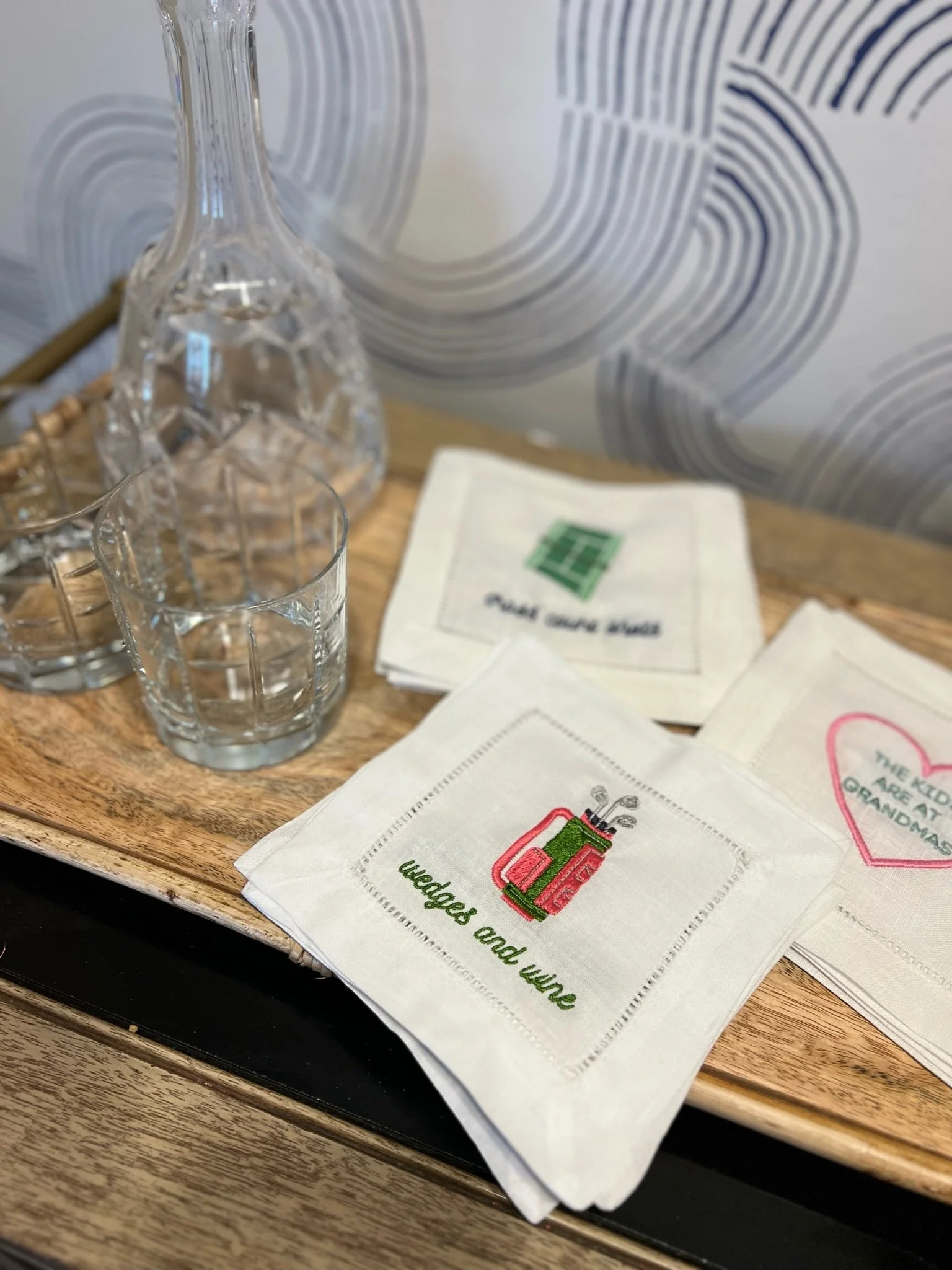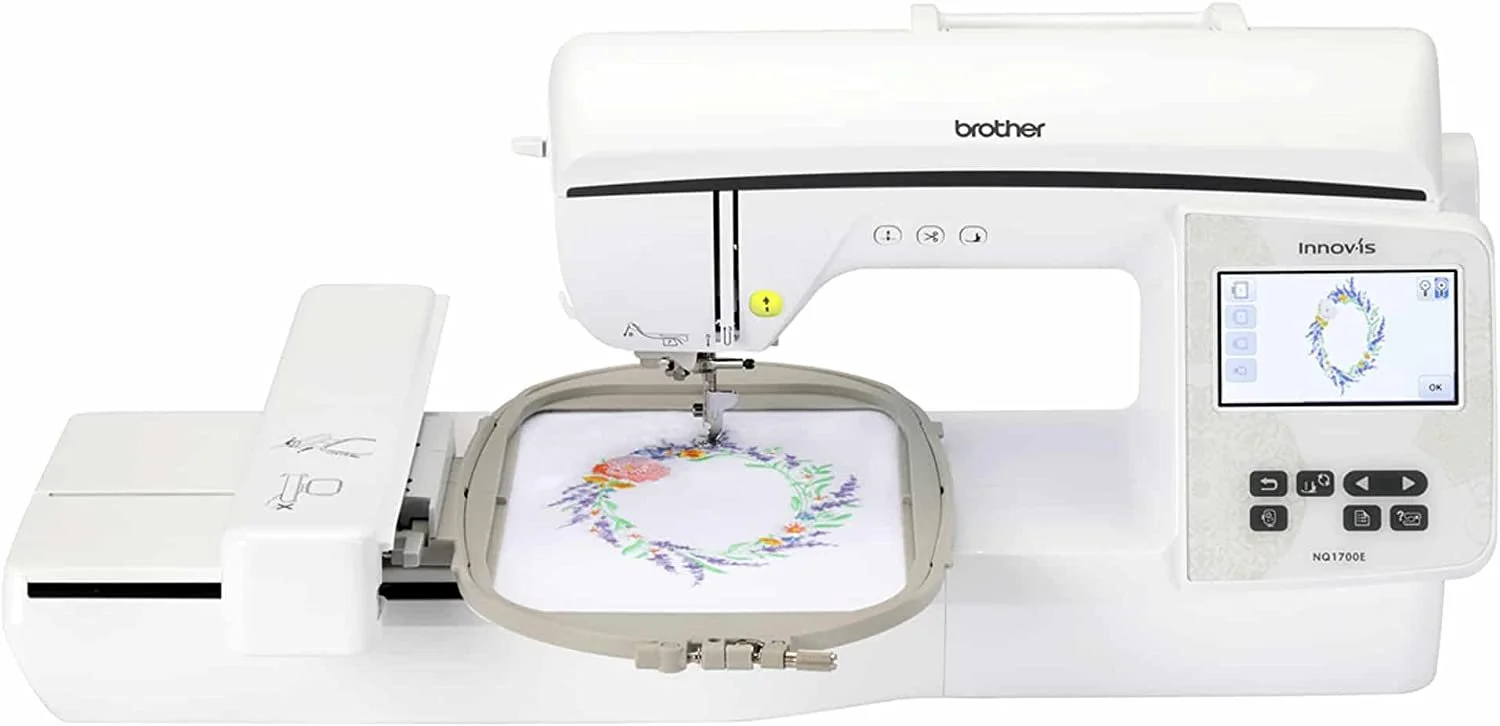How to Start an Embroidery Business
One of the best things that happened to me last year was when Kyle and I purchased our embroidery machine. It is so much fun creating unique projects and has been a fantastic revenue generator for our business. Starting an embroidery business at home is quick and easy and something busy moms can add in to make some extra income! I’ve outlined below the steps you’ll need to do to start your at home embroidery business.
In this blog I’ll go over:
Embroidery Machine Research
Market Research
Designing your first patterns
How to Order blanks
Setting up your business
Setting up your shop
Marketing your business
Managing and Fulfilling orders
Embroidery Machine Research
One of the most important things you need to decide when starting your embroidery business is what machine to purchase. There are a range of machines from under $500 to over $5000. Your financial situation and familiarity with embroidery will dictate which machine you should purchase. When I was researching machines, I knew I wanted a single needle machine, a large embroidery area (6”x10”), blue tooth capabilities, automatic thread trimming, and built in lettering. Kyle and I researched for about a week before settling on the Brother Innovis NQ1700e. It is right under $2,000 and hit all the checkmarks for the features we wanted. We ordered it from Amazon so it arrived super quickly and we were up and running the following week!
Features
Single Needle - Since we were total beginners and had never tried sewing or embroidery, we knew we didn’t want to tackle the more challenging multi-needle machines at first.
Large Embroidery Area - Since we were novices, we didn’t want to be tasked with re-hooping to make larger designs. Many single needle machines are only 5x7 max design areas and we were thrilled to find this one with a 6x10 design area. Great for denim jackets and larger projects.
Bluetooth Capabilities - We knew we wanted to do a lot of custom design so having the ability to wirelessly send the designs to the machine from a laptop was extremely important.
Automatic Thread Trimming - Automatic Thread trimming is a major time saver when you have multiple thread colors or jumps.
Built in Lettering - We weren’t sure how we were going to digitize designs when we first started so we wanted some basic designs to start.
Market Research
Deciding what you’re going to start selling is equally important and should be done in conjunction with your embroidery machine research. For example, if you’re wanting to embroider hats, you will need a machine that can accommodate them.
I recommend searching on Etsy for inspiration. It’s so helpful to see different embroidery styles and the types of products you can embroider. Some of the easier materials to embroider on are linen napkins, tote bags and crewnecks.
Once you’ve identified the product you want to sell, start researching the design styles you would like to create. Monograms and names are easy to start with as they’re typically one color and many machines have the designs on the machine so no extra steps are necessary.
While conducting your research, it’s a good idea to think about specific niches you can focus on to grow your business as you expand.
Designing Your First Pattern
If your machine has built in designs, I recommend playing around with them first on some old shirts, tea towels, etc to get comfortable with the machine. Once you feel confident with the machine and the easier designs, you can start playing around with your own designs. After some research, we decided on Hatch Embroidery Composer as our digitizing software. I found it to be the most user friendly and the autodigitizing feature makes digitizing super quick. You will need to make some tweaks on the sequence and some of the thread colors but it is easy to do! I definitely recommend Canva for creating your design. For $12.95/month you can get Canva Pro or you can use Canva for free with less graphics and fonts available to you. Once you’ve finished your design, you export it to Hatch (or the digitizing software you selected) and digitize it. Tweak the digitizing to your liking and export to your machine to begin your embroidery. Set up a one-on-one zoom call with me to get a quick how-to using Canva and Hatch!
How to Order Blanks
When you’re deciding what styles you want to sell, it’s important to think about the profit margin. You’ll want to account for the cost of the blank, the cost of the stabilizers, the time it takes you to create the design, and the time it takes to digitize and stitch the design. If you create a resale license with your state, you can purchase items at wholesale prices and you won’t pay sales tax since you’ll be collecting it and remitting it to the state when you sell the final product.
When your first starting out, Amazon has plenty of options for blanks and the ease and speed of ordering can help you get started quickly with a variety of options. Etsy also has a lot of good blanks and often at a good price.
Setting up Your Business
If you are working solo, you can easily set your business up as a Sole Proprietor or an LLC. If you decide to go the LLC route these are the basic steps you’ll need to take to set up your LLC.
Choose a name for your LLC
Make sure the name you choose is unique and not already taken by another business
Check with your state's business registration office to see if the name is available
Choose a registered agent
A registered agent is a person or business that receives legal documents on behalf of your LLC
You can choose to be your own registered agent or hire a professional registered agent service
File Articles of Organization
This is the legal document required to form an LLC. It includes basic information about your LLC, such as its name, registered agent, and business address. You will need to file this document with your state's business registration office
Obtain necessary business licenses and permits
Check with your state's business registration office and local government offices to determine what licenses and permits you need
Create an LLC operating agreement
This is a legal document that outlines how your LLC will be run. It includes information such as ownership structure, management structure, and how profits and losses will be distributed. While not required in all states, it is recommended to have one to protect your business and personal assets.
Obtain an Employer Identification Number (EIN)
This is a unique number assigned by the IRS that identifies your LLC for tax purposes
You can apply for an EIN online on the IRS website
Open a business bank account
Separating your business and personal finances is important for tax and liability purposes.
Comply with ongoing legal requirements
Depending on your state, you may need to file annual reports and pay annual fees to maintain your LLC in good standing.
Setting up Your Shop
Once you’ve decided how your business will be set up, you can decide where you want to sell your items. Etsy is a great way to start since finding customers can be challenging when you first start. If you decide to go the Etsy route, make sure you have your first product ready to list since Etsy requires you to post a listing to finish setting up your shop. It currently costs $0.20 to post each listing so it’s minimal risk posting a bunch of different product styles. If you would like to set up your own website as well, Squarespace and Shopify are great low-cost options!
Marketing Your Business
Social Media is an easy, free way to promote your new business. Create your business Instagram, Facebook, and Pinterest pages and start promoting your new products. Make sure you’re doing the following to grow your brand as you’re starting out.
Showcase your products: Share high-quality images and videos of your embroidery products. Make sure to show off the details!
Offer promotions and giveaways: Encourage engagement by offering discounts or freebies to your followers. You can run contests, offer coupon codes or host a giveaway to get people interested in your products.
Share behind-the-scenes content: Show your followers the process of creating your products, including the design process, embroidery work, and packaging. This will give them a glimpse into the work that goes into creating your products and helps build a connection with your brand!
Use relevant hashtags to reach a wider audience.
Collaborate with influencers and other brands: Partner with influencers or other brands in your niche to reach new audiences and expand your reach.
Utilize Instagram stories: Use Instagram Stories to showcase new products, offer behind-the-scenes glimpses, and share promotions or giveaways.
Highlight customer reviews and testimonials: Share positive feedback from happy customers to build social proof and establish credibility for your brand.
Use Instagram Shopping: If you have a business account and are eligible, you can use Instagram Shopping to tag your products in your posts, making it easier for customers to purchase from you.
Share tutorials: Share tutorials on embroidery techniques or how to use your products to educate your audience and build trust in your brand.
Show your personality: Be authentic and show your personality in your posts and interactions with your followers. This will help build a connection with your audience and make your brand stand out.
If you created an Etsy Shop, make sure to take advantage of all the Etsy marketing tools.
Sending free products to friends and family is a great way to advertise your new products. Ask them to take photos using the new items and use those for future marketing photos.
Managing and Fulfilling Orders
Fulfilling orders in a timely fashion is extremely important in building customer trust and will help bring back repeat customers. As you grow, it’s helpful to batch your tasks to save time and increase efficiency allowing you to spend more time marketing and growing the business. I like to complete the products on one day and then prep and mail the orders the next day.
If you are on Etsy, it is important to ship orders by the expected ship date in order to stay on good terms on Etsy and get to Star Stellar Ranking. When you’re setting up your shop you can state how long it takes you to ship so make sure you enter a length of time that is manageable but not too long that it deters customers to purchase.
Now you’ve got the tools to get your embroidery business off the ground! If you would like more one-on-one help with your business or website we’re here to help!





